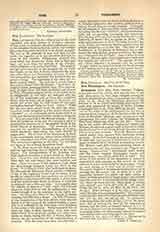

Firmament (Heb. RQYC; Sept. stereoma; Vulgate, firmamentum).—The notion that the sky was a vast solid dome seems to have been common among the ancient peoples whose ideas of cosmology have come down to us. Thus the Egyptians conceived the heavens to be an arched iron ceiling from which the stars were suspended by means of cables (Chabas, L’Antiquite historique, Paris, 1873, pp. 64-67). Like-wise to the mind of the Babylonians the sky was an immense dome, forged out of the hardest metal by the hand of Merodach (Marduk) and resting on a wall surrounding the earth (Jensen, Die Kosmologie der Babylonier, Strasburg, 1890, pp. 253, 260). According to the notion prevalent among the Greeks and Romans, the sky was a great vault of crystal to which the fixed stars were attached, though by some it was held to be of iron or brass. That the Hebrews entertained similar ideas appears from numerous biblical passages. In the first account of the creation (Gen., i) we read that God created a firmament to divide the upper or celestial from the lower or terrestrial waters. The Hebrew word yr p7 means something beaten or hammered out, and thus extended; the Vulgate rendering, “firmamentum”, corresponds more closely with the Greek stereoma (Septuagint, Aquila, and Symmachus), “something made firm or solid”. The notion of the solidity of the firmament is moreover expressed in such passages as Job, xxxvii, 18, where reference is made incidentally to the heavens, “which are most strong, as if they were of molten brass”. The same is implied in the purpose attributed to God in creating the firmament, viz. to serve as a wall of separation between the upper and lower bodies of
It may have been inserted in this missal at a later date water, it being conceived as supporting a vast celestial reservoir; and also in the account of the deluge (Gen., vii), where we read that the “flood gates of heaven were opened”, and “shut up” (viii, 2). (Cf. also IV Kings, vii, 19; Is., xxiv, 18; Mal., iii, 10; Prov., viii, 28 sqq.) Other passages, e.g. Is., xlii, 5, emphasize rather the idea of something extended: “Thus saith the Lord God that created the heavens and stretched them out” (Cf. Is., xliv, 24, and xl, 22). In conformity with these ideas, the writer of Gen., i, 14-17, 20, represents God as setting the stars in the firmament of heaven, and the fowls are located beneath it, i.e. in the air as distinct from the firmament. On this point, as on many others, the Bible simply reflects the current cosmological ideas and language of the time.
JAMES F. DRISCOLL

